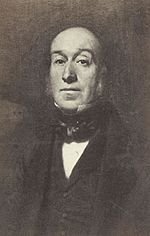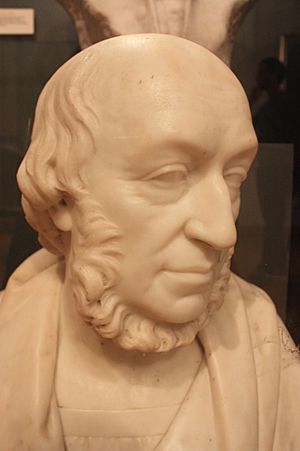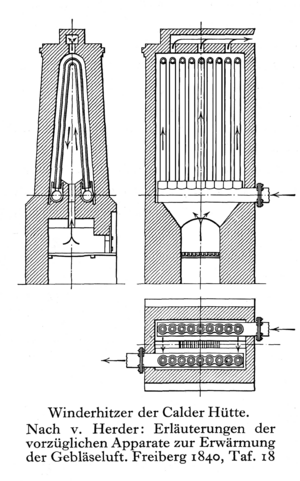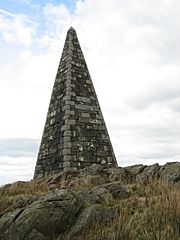James Beaumont Neilson facts for kids
Quick facts for kids
James Beaumont Neilson
|
|
|---|---|

James Beaumont Neilson
|
|
| Born | 22 June 1792 Shettleston
|
| Died | 18 January 1865 (aged 72) |
| Nationality | Scottish |
| Known for | Hot blast iron smelting |
| Scientific career | |
| Fields | inventor |
James Beaumont Neilson (born June 22, 1792 – died January 18, 1865) was a clever Scottish inventor. He came up with a special "hot-blast" process that made it much easier and cheaper to make iron. This invention changed how iron was produced around the world!
Contents
Who Was James Neilson?
James Neilson was born in a place called Shettleston, Scotland. His father, Walter Neilson, was an engineer who worked with steam engines. James followed in his father's footsteps and also trained to be an engine builder.
In 1817, when he was 25, James became the foreman at the Glasgow Gasworks. Five years later, he was promoted to manager and engineer. He held this important job for 40 years!
The Hot Blast Invention
While working, James Neilson faced a big problem at an iron factory called Wilsontown Ironworks. They were having trouble making iron efficiently in their huge furnaces. These furnaces used cold air to help melt the iron ore.
Neilson had a brilliant idea: what if they used hot air instead of cold air? He thought that blowing hot air into the furnace would make the process much more efficient. He imagined passing the air through a super-hot vessel before it entered the furnace.
He started doing experiments at the Clyde Iron Works. These tests showed that his idea worked! Using hot air made the iron-making process much better.
In 1828, James Neilson and his partners received patents for his amazing hot-blast system. This meant his invention was legally protected.
Further experiments showed that if the air was heated to about 600°F (315°C), it cut down the amount of fuel needed by two-thirds! This was a huge saving. It also meant that factories could use regular coal instead of more expensive coke.
His invention also made it possible to use a type of iron ore called "black band ironstone." Before Neilson's hot blast, this ore was too difficult and costly to use.
Protecting His Idea
Because Neilson's invention was so successful, many people wanted to use it. In the early 1830s, James and his partners had to go to court. They successfully stopped others from using his hot-blast method without permission.
After these legal battles, Neilson and his partners decided to let other iron makers use his invention. They charged a small fee for each ton of iron made using his process. This fee was low enough that most companies preferred to pay rather than try to avoid it.
By 1840, the money from these fees was quite large, showing how widely his invention was being used across the iron industry.
Later Life and Legacy
James Neilson retired from the Glasgow Gasworks in 1847. He bought a large estate on an island called Bute. Later, he bought another estate at Queenshill, near Kirkcudbright. This is where he passed away.
He is buried in his family's special tomb at Tongland Kirkyard. In 1883, his son, Walter Montgomerie Neilson, built a monument on a hill at Queenshill to remember his father.
James Neilson cared about education. In both Glasgow and near Kirkcudbright, he helped set up places where working men could learn and get an education.
His brother, William Neilson, started a company in Glasgow in 1836 that built engines and locomotives. James helped his brother by providing some of the money to start the business. James's son, Walter, later took over running this company in 1843.
See also
- Neilson v Harford




